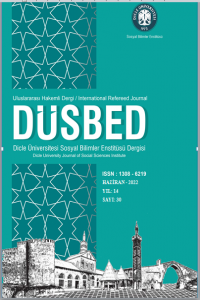Abstract
Nobel ödüllü ekonomist Paul M. Romer’in ekonomik büyüme ve teknolojik gelişme başlıklı çalışmaları yanında dikkat çekici olan bir başka ilgi alanı “şehirler” üzerinedir. Romer tarafından ortaya atılan “kiralık şehirler/ imtiyazlı şehirler” olarak dilimize çevrilen “charter cities” modeli, çok uluslu şirketlere özerk ve imtiyazlı yeni mekanlar yaratmayı hedefleyerek uluslararası alanda yeni bir ekonomik bölge yapılanması önermektedir. Dünya genelindeki boş ve geniş arazileri şirketlere kiralayarak yeni bir sözleşme türü ile insanlara çalışma ve yaşam alanı sunacağını iddia eden kiralık şehir modeli, radikal bir önermeden çıkıp gerçeklikle bağını ülke örnekleri üzerinden kurmaktadır. Bu çalışmada Romer’in kiralık şehir modelini hangi argümanlar temelinde kurguladığı incelenmeye çalışılacaktır.
References
- Aghion, P., & Howitt, P. (1992). A model of growth through creative destruction. Econometrica, 60(2), 323-351.
- Arrighi, G. (2009). Adam Smith Pekin’de- 21. Yüzyılın Soykütüğü. Yordam Kitap.
- Cao, L. (2019), Charter cities, Wm. & Mary Bill Rts. 17(3), 717-764 https://scholarship.law.wm.edu/wmborj/vol27/iss3/6
- Castle-Miller, M. R. (2015). The ciudades modelo Project: Testing the legality of Paul Romer’s Charter Cities concept by analyzing the constitutionality of The Honduran zones for employment and economic development. Willamette Journal of International Lawand Dispute Resolution, 22(2), 271-312.
- Coetzee, M. (2017). Charter cities: What if we could start froms cratch? Construction Research and Innovation, 8(4) 117-120. https://doi.org/10.1080/20450249.2017.1367535
- Cohen, B. (2006). Urbanization in developing countries: Current trends, future projections, and key challenges for sustainability, Technology in Society (28), 63–80, https://doi.org/10.1016/j.techsoc.2005.10.005
- Freeman, C., & Soete, L. (2003). Yenilik iktisadı (Çev. E. Türkcan), TÜBİTAK Yayınları.
- Freiman, C. (2013). Cosmopolitanism within borders: on behalf of charter cities. Journal of Applied Philosophy, 30(1), 40-52.
- Fuller, B., & Romer, P. M. (2012) Successand the city: How charter cities could transform the developing World. Macdonald-Laurier Institute Publication.
- Grossman, G. M., & Helpman E. (2001). Innovation and growth in the global economy. The MIT Press.
- https://www.nobelprize.org/uploads/2018/10/popular-economicsciencesprize2018.pdf (erişim tarihi: 09.01.2022).
- https://www.aurecongroup.com/thinking/thinking-papers/charter-cities-start-scratch, (erişim tarihi: 09.01.2022).
- Jones, C. I. (2001). İktisadi büyümeye giriş, (Çev. S. Ateş ve İ. Tuncer). Literatür Yayıncılık.
- Jones, C. I. (2019). Paul Romer: Ideas, nonrivalry, and endogenous growth. Scandinave Journal of Economics, 121(3), 859–883.
- Mallaby, S. (2010). The politically ıncorrect guide to ending poverty - The Atlantic, http://www.theatlantic.com/magazine/archive/2010/07/the-politically-incorrect-guide- toending-poverty/8134/ (erişim tarihi: 10.01.2022)
- Oputumay, D. (2021), The Blank Slate Fantasy The Promise and Pitfalls of International Charter Cities, https://republic.com.ng/april-may-2021/promise-pitfalls-charter-cities/
- Romer, P. M. (2011). The world’s first charter city? TED2011, https://www.ted.com/talks/paul_romer_the_world_s_first_charter_city
- Romer, P. M. (2010). Technologies, rules, and progress: the case for charter cities, www.cgdev.org/content/publications/detail/1423916
- Romer, P. M. (2009). Why the world needs charter cities, TEDGlobal 2009, https://www.ted.com/talks/paul_romer_why_the_world_needs_charter_cities/transcrip t?language=tr.
- Romer, P. M. (1990). Endogenous technological change. Journal of Political Economy, 98(5), 71-102.
- Sand, T. (2019). Charter cities: development model or neocolonialism? Periodica Polytechnica Social and Management Sciences, 27(2), 180-187.
- Stiglitz, J. E. (2008). China: Towards a new model of development. China Economic Journal, 1(1), 33-52.
- United Nations (2019). World Urbanization Prospects: The 2018 Revision, United Nations.
Details
| Primary Language | Turkish |
|---|---|
| Journal Section | Research Article |
| Authors | |
| Early Pub Date | June 30, 2022 |
| Publication Date | June 30, 2022 |
| Submission Date | March 21, 2022 |
| Published in Issue | Year 2022 Issue: 30 |
Dicle University
Journal of Social Sciences Institute (DUSBED)

